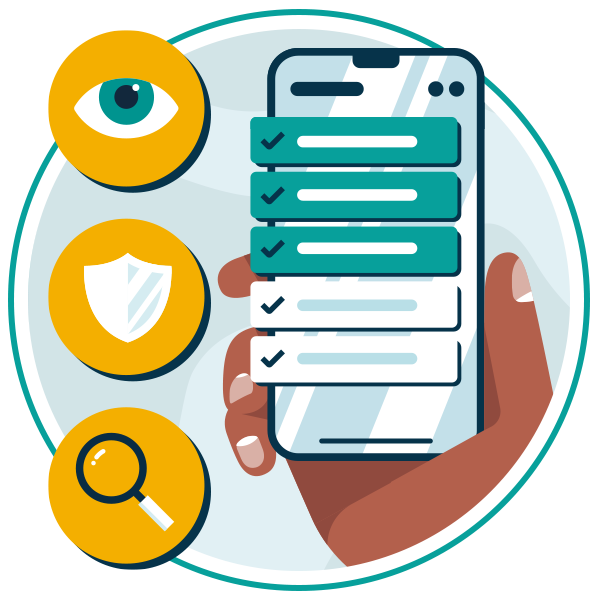Get A Free Accessibility Check Of Your Website
Download NowSection 508 marks a pivotal step on the path toward inclusivity. This amendment brought the Rehabilitation Act of 1973 into the modern world, ensuring that digital spaces, as well as physical spaces, used by government agencies and their contractors, are accessible to those with disabilities. Want to know if it applies to your organization and how to comply? Let’s dive in!
An overview of Section 508 compliance
The passing of the Rehabilitation Act of 1973 was momentous for its time, being the first federal law to prohibit discrimination against people with disabilities. It opened doors for individuals with disabilities across the government and government contractor workforce.
Section 508 was an amendment to the act brought about in 1998. Think of it as a much-needed update, bringing the Rehabilitation Act of 1973 into the modern digital world. Under Section 508, government agencies and their contractors were, for the first time, required to think about the accessibility of their Information and Communication Technology (ICT).
It is now law that these organizations not only make their physical spaces inclusive for disabled individuals, but their digital ones too. What does this mean exactly? It means that those with impairments are able to navigate websites, consume digital documents, and use software, without significant barriers to access.
Section 508 compliance checklist
When it comes to complying with Section 508, knowing where to start can feel somewhat overwhelming. There are a seemingly infinite amount of strategies you can implement and directions you can take. To help you, here is a 10-point checklist. Work through this step by step, and you’ll be well on your way to achieving Section 508 compliance.
1. Provide Text Alternatives for Images
- Provide alt text descriptions for all images, making them compatible with screen readers.
- Be vivid with descriptions and convey the image content clearly.
- Avoid overcomplicating descriptions with too many words and technical jargon.
2. Ensure Keyboard Accessibility
- Ensure all digital functions are accessible using a keyboard only.
- Make sure interactive elements like forms, menus, and buttons can be navigated using the keyboard’s tab function.
- Provide visible focus indicators which ease navigation by highlighting the currently selected element.
3. Use Descriptive Headings and Labels
- Structure content with appropriate heading tags (H1, H2, H3, etc.) to make it easier for screen readers to navigate the web page.
- Use meaningful labels for form fields to help users understand what they are clicking on.
- Avoid vague instructions like “Select from the options below”.
4. Ensure Documents are Accessible
- PDFs and Word documents must include tags to define the correct reading order and semantic structure.
- Provide text-based alternatives (i.e. word documents) to image-based documents (i.e. scanned image of PDF document).
- Avoid pasting entire URLs into documents; use descriptive links instead.
5. Curate Accessible Forms
- Label all form fields clearly, and include instructions where necessary.
- Make sure error messages are informative and helpful.
- Ensure users can navigate and submit forms using only a keyboard.
6. Ensure Color Contrast is Sufficient
- Use contrasting colors for text and background to ensure optimal readability.
- Avoid relying solely on color to convey meaning (e.g., red text for errors); provide accompanying text-based messages.
- Ensure color contrasts meet the acceptable standard of 4.5:1 for Section 508 compliance.
7. Make Multimedia Accessible
- Caption videos and offer transcripts for audio files.
- Ensure captions are synchronized correctly with video content.
- Offer pause, play, and speed control functions.
8. Ensure Resize Text Functionality
- Make sure text can be resized up to 200% without losing functionality or clarity.
- Avoid using images of text wherever possible.
- Ensure your website keeps its functionality at various zoom levels.
9. Provide Clear Navigation
- Be consistent with how you structure web pages.
- Use descriptive web page titles and avoid generic link text, like “click here”.
- Offer search functionality, so users can easily access the content they want.
10. Make Interactive Elements Accessible
- Ensure that dropdown menus, sliders, and other interactive elements are keyboard accessible.
- Provide explanations for any non-standard interactive elements.
- Use assistive technologies, like screen readers, to test interactive elements for accessibility.

Free Section 508 Compliance Check of your Website
Finding 508 compliance issues is now easier than ever. Recite Me offers a free automated scan of your website’s homepage to highlight non-compliance. You’ll get recommendations on how to fix them, helping to improve your accessibility score.
Which organizations does Section 508 apply to?
Broadly speaking, Section 508 applies to federal agencies and their contractors. But what does this look like exactly? Outlined below are the 3 main types of organization that Section 508 applies to.
- Federal agencies: U.S. federal government agencies, such as the Department of Homeland Security, must ensure everything from their websites and software to electronic documents and internal systems are accessible to people with disabilities.
- Federal contractors: As well as government agencies, any business that is contracted by a government agency to carry out a specific project (i.e., software vendors, web developers, or consulting firms) must also meet Section 508 standards.
- Organizations receiving federal funding: Nonprofit organizations, educational institutions, and any other entity receiving government funds must comply with Section 508. This often applies to colleges, universities, and grant recipients working with government agencies.
While Section 508 does not mandate that private businesses comply with the act, they may choose to voluntarily comply anyway. Doing so can help expand your audience, reduce legal risks, and demonstrate to your users a commitment to inclusivity.
It is also important to note that while exemptions are not too common with Section 508, they do exist. For example, any ICT operated by agencies as part of a national security system is exempt. Similarly, the act also makes an exception for scenarios where conformance would impose an “undue burden”.
How to test for section 508 compliance
So, you’ve gone through the checklist, made all the necessary adjustments, and now you’re well on your way to being Section 508 compliant. What next? Well, before you sit back, dust your hands off, and enjoy the fruits of accessibility best practices, it’s time to test your site. After all, testing is the only way to make sure your site is as accessible as you say it is. This section outlines the main methods you can use to test for Section 508 compliance.
Automated testing
Automated tools, like Recite Me’s accessibility checker can scan your website for non-compliant features, helping you quickly identify which items need addressing. These tools provide an efficient and effective means of auditing your content. They can identify things like missing alt text or insufficient color contrast. However, for the best results and to ensure rigorous testing, it is important to combine automated tools with other forms of audit like manual or user testing.

Manual Testing
Manual testing is typically carried out by web developers or accessibility experts. Their role is to scan through the website or platform with a fine tooth comb, manually checking individual elements (i.e., forms, multimedia, or buttons) for potential barriers to inclusion.
Crucially, this type of audit focuses specifically on technical compliance, testing how the content stands up to Section 508 standards. This may involve testing that the entire website can be browsed using keyboard navigation only. It may also involve using tools like screen readers to verify if the website is compatible with various types of assistive technologies.
User Testing
User testing takes accessibility one step further, going beyond mere technical compliance by focussing on the practical usability of your online content. As such, it involves asking a representative portion of your disabled users to test your site, checking for any inaccessible features.
Gather feedback from these users on areas where they encounter difficulties, and use this feedback to make further improvements. Often, disabled users will notice flaws that developers or software tools might miss.

The benefits of becoming compliant with section 508
There is no escaping that complying with Section 508 is a significant time investment. But the business benefits bestowed on your organization post-compliance more than make up for it. This section outlines just some of the benefits you can expect:
- Avoid legal risks: Complying early on with Section 508 removes the possibility of incurring costly legal battles or financial penalties.
- Wider audience reach: Accessible content enhances your organization’s reach by allowing the millions of disabled internet users to engage with your products and services.
- Improved usability for all: By improving things like website navigation, color contrast, and offering customization features, you improve the usability of your content for everyone, not just those with disabilities.
- Better search engine optimization (SEO): Search engines favor well-structured, accessible websites, boosting your rankings and generating new leads.
- Boost your brand reputation: A commitment to inclusivity enhances your brand image and builds trust with your audience, helping cultivate a loyal customer base.
- Increase conversion rates: Accessible forms and content can reduce friction throughout the user journey, making it easier for all users to complete actions like purchases or sign-ups.
